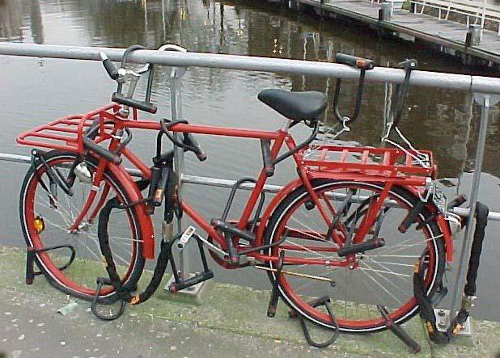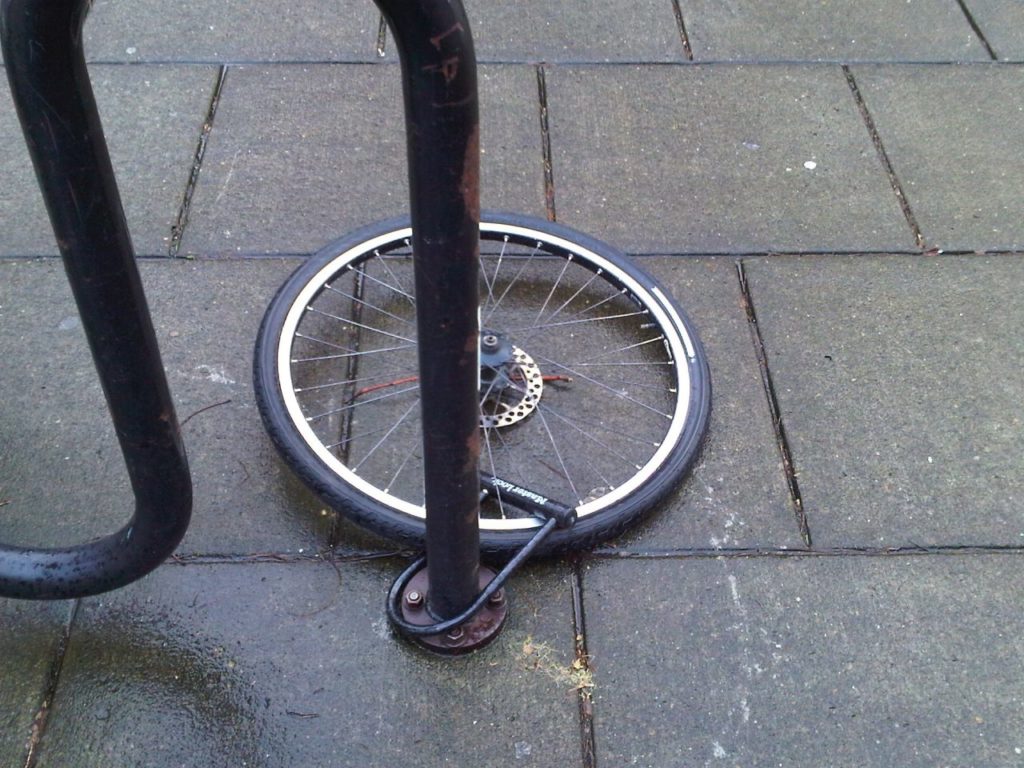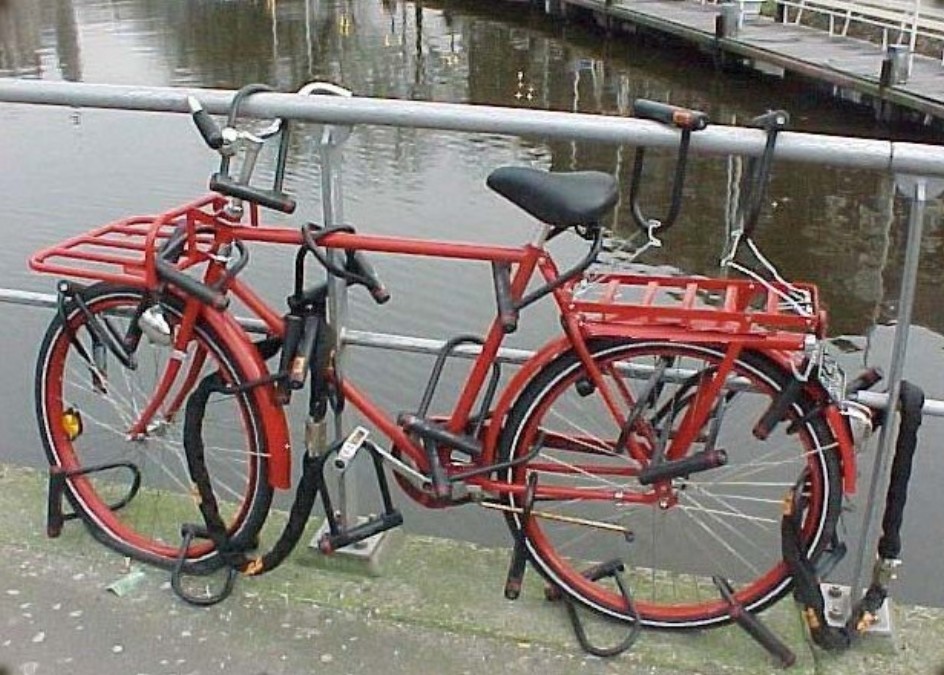Have you heard that all bicycles weigh fifty pounds? It’s because a thirty-pound bicycle needs a twenty-pound lock, a forty-pound bicycle needs a ten-pound lock, and a fifty-pound bicycle doesn’t need a lock at all. Well, maybe that was true before we had easy access to cargo bikes, e-bikes, and other heavy-duty bikes, but today?
And what about your sub-twenty pound bike? Do they even make a 30+ pound lock, or should you bring along a couple of 20 pounders, just to be safe? And doesn’t that kind of defeat the purpose of having, you know, a lighterbike?
Well, it is just a quip. But in the arms race against bike thieves, it can seem true, with the strongest locks getting really hefty.

And even then, we’ve probably all seen the videos of a “bike thief” cutting locks with power tools in broad daylight, in full view of indifferent big city passers-by. So even with a couple of the strongest locks you can buy, what’s the point? Should you just resign yourself to the inevitable?
No. It’s actually not as bad as it can seem. Sure, up to 2 million bikes are stolen every year, with the annual haul from bike theft in the $50 million neighborhood (making the take from bike theft higher than the take from bank robbery, according to the FBI). But that doesn’t mean that your bike has to get stolen, or that you can’t take steps to protect yourself. In fact, with these five tips, it’s actually easy to protect yourself from bike theft.
1. Document everything. Create a file for your bike; include your Bill of Sale (you should always have one) and make sure you have your bike’s make model, color, and serial number in the file. Take some photos of your bike, including photos of distinguishing characteristics that would help identify the bike as your bike, and place the photos in your file. If your change your bike’s appearance over time, photograph the changes as well. Every time you have your bike serviced, put the service record in your bike file. What you are doing is creating a record of ownership of this particular bike (and do this for each bike you own).
2. Do you have insurance? If you have homeowner’s or renter’s insurance, be clear about what is covered by your policy. If your policy covers theft of your bike, and you want “full replacement value” if your bike is stolen, you have to specify that in the policy. Otherwise, the policy will only pay you “depreciated value,” which, after a few years, amounts to zero. If your bike didn’t cost much to begin with, you should consider replacing the bike “out of pocket” instead of filing a claim, because filing a claim may raise your premiums. Save the “full replacement value” and stolen bike claims for bikes that would cost more to replace than you would be comfortable paying out of pocket.
3. Do you have a lock? If the bike will be out of your immediate possession for even a moment, you should lock it up—even in your garage, or back yard. Most bike thefts involve a bike that was left unattended for “just a minute.” The second most common thefts occur with bikes that are poorly locked with cheap locks or bad locking technique.
You don’t need the best lock available, but you do need to have a good lock—one that can’t be easily cut with a pair of bolt cutters. If you’ve never cut a lock before, you would be surprised at how easy they are to cut. Cables? Quick work for a thief with a fresh bolt cutter. Padlocks? Like cutting butter. Get a good quality u lock, or a heavy-duty chain and lock combination, or plan on losing your bike at some point.
4. Do you know how to use your lock? Because if you don’t, even the best lock in the world won’t help. First, never, ever lock your front wheel to a bike rack and think your bike is locked. As Hal Ruzal says, there’s a reason they call them “quick releases.” It’s not uncommon to see a forlorn front wheel locked with a stout u lock to a bike rack, with the rest of the bike missing, courtesy of the neighborhood bike thief.

Instead, lock the bike frame to the bike rack. There are different ways to do this; some people lock the seat tube to the rack, while the late, greatSheldon Brown recommended only locking the rear wheel through the triangle. Loop a thick cable through your front wheel and the u lock, and if you want to ride home on something other than the seat post, consider locking your saddle too.
Is that all? No. You also have to be careful about what you lock your bike to.
5. What if your bike is stolen anyway? Chances are good that you won’t have your bike stolen, because thieves prefer to take all the low-hanging fruit laying around. Why waste time trying to break your lock, when there’s a perfectly good bike right next to yours that has a cheap lock, or a poor locking technique? Or better yet, no lock at all? With all of those easy pickings, your bike will probably be left alone.
But suppose that, despite your best efforts, your bike gets stolen? The first thing you will want to do is report the theft to the police. They will want a description of the bike, including the serial number. Remember that file you started at the very beginning? Now is when you will need that proof of ownership. Nearly half of all stolen bikes are recovered by the police. But the police will not return your stolen bike back to you unless you report it stolen, and can prove that the bike is yours.
If you file an insurance claim on your stolen bike, you will need a copy of the police report. But if the insurance company pays on your claim, and your bike is later recovered by the police, it now belongs to the insurance company, and if you want your bike, you will have to buy it back from your insurer.
This article, Do all Bicycles Weigh Fifty Pounds? Five Tips For Protecting Yourself From Bike Theft, was originally published on Road ID Blog on May 9, 2014.





